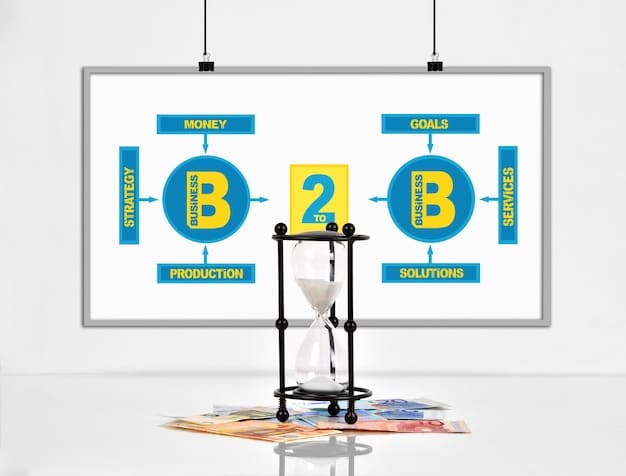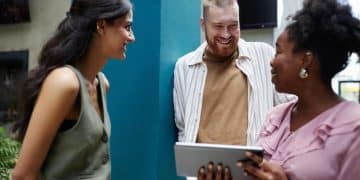Affordable Care Act (ACA) Marketplace 2025: Enrollment Guide

Navigating the Affordable Care Act (ACA) Marketplace in 2025 requires understanding enrollment periods, plan options, and eligibility for subsidies to secure affordable health coverage.
Understanding how to navigate the Affordable Care Act (ACA) Marketplace in 2025: Enrollment Tips and Tricks is essential for securing health coverage. This guide provides key information and strategies to help you through the process.
Understanding the Affordable Care Act Marketplace
The Affordable Care Act (ACA) Marketplace, also known as the Health Insurance Marketplace, is a platform where individuals and families can purchase health insurance plans. These plans are offered by private insurance companies and are categorized into different tiers based on coverage and cost.
The ACA Marketplace aims to provide access to affordable health insurance, especially for those who don’t have coverage through their employer, Medicare, or Medicaid. Understanding its structure and offerings is the first step in navigating it effectively.
Key Features of the ACA Marketplace
The ACA Marketplace is designed to be user-friendly and transparent, offering several key features.
- Wide Range of Plans: The marketplace offers a variety of health insurance plans categorized into metal tiers (Bronze, Silver, Gold, and Platinum), each providing different levels of coverage and cost-sharing.
- Financial Assistance: Many individuals and families are eligible for subsidies, such as premium tax credits and cost-sharing reductions, to help lower their monthly premiums and out-of-pocket costs.
- Open Enrollment Period: The annual open enrollment period is when most people can enroll in a health insurance plan through the marketplace. Special enrollment periods are available for qualifying life events.
Overall, the ACA Marketplace is a valuable resource for accessing health insurance. It provides a structured and supportive environment for comparing plans and obtaining financial assistance if eligible.

In conclusion, understanding the Affordable Care Act Marketplace is crucial for accessing quality healthcare. Ensuring you’re informed can help you utilize this resource effectively.
Important Dates for 2025 Enrollment
Knowing the deadlines for enrollment is a critical aspect of navigating the ACA Marketplace. Missing these dates can result in a lapse in coverage or waiting until the next open enrollment period.
The enrollment periods are designed to provide individuals with specific timeframes to enroll, change, or renew their health insurance plans. Keeping track of these dates is essential for continuous coverage.
Key Enrollment Dates to Remember
Several key dates influence your ability to enroll in or modify your health insurance plan.
- Open Enrollment Period: Typically, the open enrollment period runs from November 1 to January 15 in most states. However, some state-based marketplaces may have different deadlines.
- Coverage Start Date: If you enroll or change plans by December 15, your coverage will usually start on January 1 of the following year. Enrollments between December 16 and January 15 may have a coverage start date of February 1.
- Special Enrollment Periods: If you experience a qualifying life event, such as losing coverage, getting married, or having a baby, you may be eligible for a special enrollment period outside the open enrollment window.
In summary, staying informed about important enrollment dates is essential for ensuring continuous health coverage through the ACA Marketplace.
Eligibility for Subsidies and Cost-Sharing Reductions
One of the significant benefits of the ACA Marketplace is the potential for financial assistance. Many individuals and families are eligible for subsidies that can dramatically reduce the cost of health insurance.
These subsidies are designed to make health coverage more affordable for low- to moderate-income individuals and families. Understanding the criteria for eligibility can help you determine if you qualify for these benefits.
How to Determine Your Eligibility
Eligibility for subsidies is primarily based on household income and family size. Here are some factors to consider:
- Income Limits: Subsidies are generally available for individuals and families with incomes between 100% and 400% of the federal poverty level (FPL). The specific income limits vary depending on the number of people in your household.
- Household Size: The number of people in your household affects your eligibility for subsidies. Larger households typically have higher income limits to qualify.
- Cost-Sharing Reductions: In addition to premium tax credits, you may also be eligible for cost-sharing reductions, which lower your out-of-pocket costs, such as deductibles, copayments, and coinsurance.

In conclusion, determining your eligibility for subsidies and cost-sharing reductions is an important step in navigating the ACA Marketplace. Leveraging these benefits can make health insurance significantly more affordable.
Comparing Health Insurance Plans
The ACA Marketplace offers a variety of health insurance plans, each with different levels of coverage and costs. Comparing these plans carefully is essential to finding the one that best fits your needs and budget.
Understanding the different metal tiers and the types of coverage they provide can help you make an informed decision. Here’s how to approach the comparison process.
Understanding Metal Tiers
ACA plans are categorized into metal tiers: Bronze, Silver, Gold, and Platinum. Each tier offers a different balance between monthly premiums and out-of-pocket costs.
- Bronze Plans: These plans have the lowest monthly premiums but the highest out-of-pocket costs. They are a good option if you don’t anticipate needing much medical care during the year.
- Silver Plans: Silver plans have moderate premiums and moderate out-of-pocket costs. They may also be eligible for cost-sharing reductions if your income is within certain limits.
- Gold Plans: Gold plans have higher premiums but lower out-of-pocket costs. They are a good choice if you expect to need regular medical care.
- Platinum Plans: Platinum plans have the highest premiums but the lowest out-of-pocket costs. They are suitable for those who need frequent and extensive medical services.
In summary, carefully compare health insurance plans to find the best fit for your healthcare needs and budget. Understanding each plan’s options will ensure you choose the right one.
Tips for a Smooth Enrollment Process
Enrolling in a health insurance plan through the ACA Marketplace can be straightforward if you’re well-prepared. Here are some tips to help ensure a smooth enrollment process.
These tips cover everything from gathering necessary documents to avoiding common mistakes. Following these guidelines can help you navigate the marketplace with confidence.
Steps to Ensure a Seamless Experience
Here are concrete steps to make the enrollment process as seamless as possible.
- Gather Necessary Documents: Before you start, collect all necessary documents, including your social security number, employer and income information (such as W-2 forms), and policy numbers for any current health insurance plans.
- Create an Account: Visit the ACA Marketplace website and create an account. You’ll need to provide some basic personal information to get started.
- Compare Plans: Use the marketplace’s tools to compare different health insurance plans. Pay attention to premiums, deductibles, copayments, and the network of doctors and hospitals included in each plan.
For a streamlined enrollment experience, ensure to gather required documents , create an account beforehand and compare plans based on your needs.
Avoiding Common Mistakes
While the ACA Marketplace is designed to be user-friendly, it’s easy to make mistakes that can affect your coverage or eligibility for financial assistance. Being aware of these common errors can help you avoid them.
Common mistakes range from incorrectly estimating income to selecting the wrong plan. Knowing these pitfalls can lead to a more successful enrollment experience.
Common Pitfalls to Watch Out For
Knowledge can prevent you from making some common costly mistakes.
- Underestimating Income: Many people underestimate their income when applying for subsidies, which can result in having to pay back some of the financial assistance when they file their taxes. Be sure to provide an accurate estimate of your expected income for the year.
- Selecting the Wrong Plan: Choosing a plan based solely on the monthly premium can be a mistake. Consider your healthcare needs and potential out-of-pocket costs before making a decision.
- Missing Deadlines: Failing to enroll by the deadline can result in a gap in coverage or having to wait until the next open enrollment period. Mark important dates on your calendar and submit your application well in advance of the deadline.
Keep in mind when enrolling, don’t underestimate your income, don’t select a plan based only on price but also conside healthcare costs and ensure you remember the crucial deadlines to avoid losing your coverage.
| Key Point | Brief Description |
|---|---|
| 🗓️ Enrollment Dates | Open enrollment runs from November 1 to January 15 in most states. |
| 💰 Subsidy Eligibility | Based on income and household size, subsidies lower premium costs. |
| ⚕️ Comparing Plans | Evaluate metal tiers (Bronze, Silver, Gold, Platinum) for different coverage levels. |
| ✅ Smooth Enrollment | Gather documents, create an account, and compare options carefully. |
Frequently Asked Questions (FAQ)
▼
The open enrollment period typically runs from November 1 to January 15 in most states. This is when most people can enroll in or change their health insurance plans.
▼
A special enrollment period is triggered by a qualifying life event, such as losing health coverage, getting married, having a baby, or moving to a new state.
▼
A premium tax credit is a subsidy that helps lower your monthly health insurance premiums. Eligibility is based on your estimated household income and family size.
▼
Cost-sharing reductions lower your out-of-pocket costs, such as deductibles, copayments, and coinsurance. These are typically available to those with lower incomes enrolled in Silver plans.
▼
Estimate your income based on your expected earnings for the year, including wages, self-employment income, and other sources. Use your tax return from the previous year as a starting point.
Conclusion
Navigating the Affordable Care Act Marketplace in 2025 can be manageable with the proper preparation and information. Understanding the enrollment periods, eligibility for subsidies, plan options, and common pitfalls will empower you to make informed decisions and secure the health coverage that best fits your needs.





